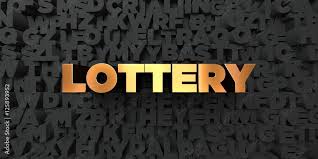
Lotteries have long been embedded in the fabric of European cultures, offering a tantalizing mix of excitement and the prospect of life-changing fortunes. The demographic landscape of lotto players in Europe is remarkably diverse, with individuals from various age groups, socioeconomic backgrounds, and regions participating in these games of chance. In this article, we explore the multifaceted demographic view of people playing lotto in Europe, shedding light on the factors that contribute to the widespread appeal of these games.
1. Age Groups:
Lotteries in Europe attract participants across a broad spectrum of age groups. While older generations may have traditionally been more involved in lotto games, the landscape has evolved to include a significant number of younger players. Millennials and Generation Z, driven by the convenience of online platforms and the allure of sizable jackpots, are increasingly drawn to lotteries as a form of entertainment and a chance at financial windfalls.
2. Socioeconomic Backgrounds:
Lotto players in Europe come from diverse socioeconomic backgrounds, dispelling the notion that participation is confined to specific income groups. Lotteries are accessible to individuals across the economic spectrum, with ticket prices accommodating a range of budgets. While some play for the thrill of the game, others see lotteries as an affordable and entertaining opportunity to dream of a better financial future.
3. Geographic Distribution:
Lottery participation spans the entire European continent, with players hailing from urban centers to rural communities. National lotteries, such as the UK National Lottery, the Spanish Christmas Lottery (El Gordo), and others, are deeply ingrained in the cultural and social fabric of their respective countries. Additionally, cross-border lotteries, such as EuroMillions, draw participants from multiple European nations, contributing to a sense of community and shared excitement.
4. Education Levels:
Lottery participation does not correlate exclusively with educational attainment. Players with varying levels of education find appeal in the simplicity and accessibility of lotto games. The democratization of lotteries through online platforms has further widened participation, allowing individuals from different educational backgrounds to engage in these games of chance.
5. Gender Diversity:
Lotto demographics exhibit a relatively balanced gender distribution, with both men and women participating in these games. The gender-neutral nature of lotteries, coupled with the widespread availability of tickets, has contributed to the inclusivity of this form of entertainment. The advent of online platforms has made it even more convenient for individuals of all genders to try their luck.
6. Motivations for Playing:
People play lotto in Europe for a myriad of reasons, reflecting the diversity of individual motivations. Some are drawn to the sheer excitement of the game, relishing the anticipation of a potentially life-altering win. Others view lotteries as a form of escapism, allowing them to briefly fantasize about financial freedom. The communal nature of shared jackpot experiences, especially during major draws, adds a social element that transcends demographics.
7. Cultural Influences:
Cultural factors significantly influence the demographic composition of lotto players in Europe. In countries where lotteries have deep historical roots, participation is often intertwined with cultural traditions and celebrations. For instance, the Spanish El Gordo Christmas Lottery is not just a game; it is an integral part of the holiday season, creating a sense of communal joy and anticipation.
8. Technological Adoption:
The advent of online platforms has reshaped the demographics of lotto players in Europe. Younger generations, accustomed to digital interactions, are more likely to engage in online lotto activities. The convenience of purchasing tickets, checking results, and participating in international lotteries from the comfort of one’s home has broadened the appeal of lotteries across all age groups.
Conclusion:
The demographic view of people playing lotto in Europe is a mosaic of diversity, reflecting the widespread and inclusive nature of these games. Lotto enthusiasts come from various age groups, socioeconomic backgrounds, and regions, united by the shared thrill of anticipation and the dream of winning big. The evolving landscape, influenced by technology, cultural traditions, and changing attitudes, ensures that lotteries continue to capture the imagination of a broad and diverse audience across the European continent.